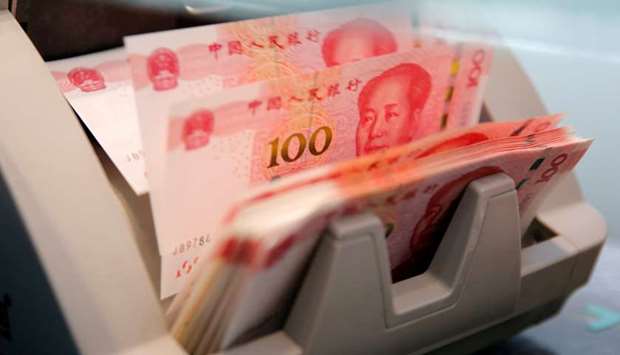When the offshore yuan matched its record low last week, it served notice that China’s exchange-rate fixing had returned as a key variable to participants in the $6.5tn-a-day global foreign-exchange market.
With Sino-American tensions on the rise again, China’s appetite to allow significant drops in the yuan will affect the day-to-day moves of a whole raft of other currencies. While correlation is lacking over longer periods, last Wednesday showcased the kind of spot impact the yuan can have for others. The offshore yuan slid 0.7% at one point against the dollar in wake of the bilateral flare-up over Hong Kong. Australia’s dollar dropped as much as 1.3%, while the Colombian peso saw a 1.4% drop.
“The yuan is definitely on my radar,” said Stuart Simmons, a senior portfolio manager at QIC Ltd, which manages about A$83bn ($53bn). “I use it more as an indicator to take advantage of opportunities in markets.”
Others are making direct bets on the currency. Mansoor Mohi-uddin, a markets veteran of more than two decades, said the yuan is “an increasingly important part of investor FX portfolios.”
“The yuan is in the top two or three currency pairs now that investors will assess for an outlook for global currencies,” said Mohi-uddin. It’s an indicator of global sentiment, and of the trade war, he said.
The yuan’s attention belies its still-small share of global trading. It accounted for 4.3% of trades in a Bank for International Settlements survey last year, roughly one quarter the share of the yen, and still behind the likes of the Australian dollar and Swiss franc. Still, part of that is because of capital controls and limits on the free use of the yuan in global markets. Indeed, Simmons at QIC said “the controls do introduce concerns of unwarranted risk around your hedging.”
But in a way that, say, Britain’s pound cannot, the yuan can give investors instant insight into the state of US-China ties and, in particular, Chinese policy makers’ willingness to up-the-ante in continuing trade tensions by deploying exchange-rate depreciation as a tool.
“The yuan now is more important than, for instance, the yen or sterling,” Olivier Korber, a foreign-exchange and derivatives strategist at Societe Generale SA in Paris, said of the yuan’s clout on sentiment and risk appetite. That’s why the People’s Bank of China’s daily fixing for the yuan in the local market is again a fixture for traders to monitor each day. The announcement, about 9.15am Shanghai time, offers a glimpse of whether officials would like to restrain depreciation.
“Over the last month the PBoC has demonstrated some tolerance for gradual currency depreciation, in our view,” Goldman Sachs Group Inc analysts including Zach Pandl wrote in a May 31 note. The team cut its projection for the yuan to 7.25 per dollar over three months. It was at 7.1244 yesterday afternoon in Shanghai.
The yuan has been in the spotlight plenty of times before, notably back in 2015, when a messy devaluation saw reverberations across asset classes, as investors tried to interpret what the move meant for China’s economic outlook.
The attention and occasional impact on global markets belies the currency’s small presence in the world’s payments system and in central bank reserves – about 2% or less on both counts, as of the end of 2019. The onshore yuan had a daily traded volume of $33bn last year, compared with $3.27tn for the dollar and $1.59tn for the euro.
“Yes, people are watching the yuan closely,” said Wong Joo Seng, chief executive of the foreign-exchange platform Spark Systems. “Trading has gone up – but it still has a way to go yet before it becomes truly global.”

Chinese 100 yuan banknotes are seen in a counting machine at a branch of a commercial bank in Beijing (file). When the offshore yuan matched its record low last week, it served notice that China’s exchange-rate fixing had returned as a key variable to participants in the $6.5tn-a-day global foreign-exchange market.
